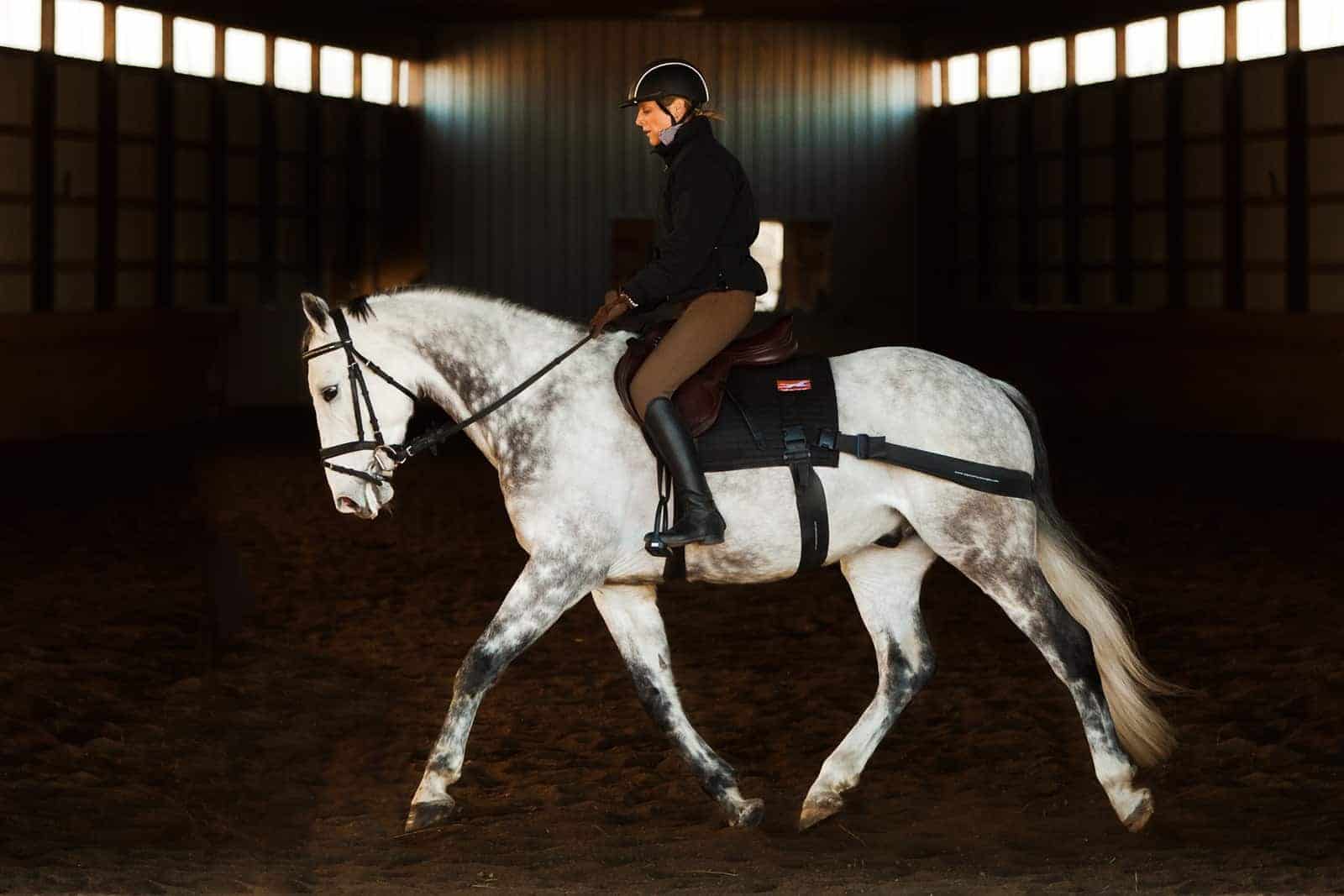Rehab Exercises Can Improve Horses’ Postural Stability

A team from Colorado State University (CSU) recently assessed the relationship between muscle strength and postural sway in rehabbing horses to confirm that certain rehab exercises work. Katherine Ellis, DVM, now an Equine Sports Medicine and Rehabilitation clinician at the University of Georgia, presented their findings at the 2020 American Association of Equine Practitioners’ Convention, held virtually.
The Importance of the Multifidi Muscles
The team focused on the thoracolumbar multifidus muscles that help stabilize the spine. They run adjacent to the vertebrae along the length of the spinal column. Ellis explained that several studies have shown that humans with spinal pathology (damage or disease) have reduced multifidus cross-sectional area (CSA). Disuse of these muscles due to back pain causes them to atrophy (shrink) and can lead to a chronic cycle of pain and muscle dysfunction. As a result, these individuals also experience reduced postural stability and increased postural sway.
“This decreased postural stability has been demonstrated in humans on prolonged rest,” said Ellis. “It’s likely that a similar effect can occur in our equine patients on stall rest following injury or illness.”
Asking rehabbing horses to perform exercises that strengthen these muscles should, theoretically, help them return to work and avoid reinjury.
The Study
In their investigation Ellis and her colleagues sought to determine whether a positive correlation exists between thoracolumbar multifidus muscle CSA and postural stability improvements in lame horses undergoing rehabilitation exercises.
They recruited seven client-owned horses enrolled in CSU’s rehabilitation program, where they’d be doing regular core-strengthening exercises using resistance band systems, balance pads, and dynamic mobilization. The researchers performed an ultrasound exam on each horse to measure thoracolumbar multifidus muscle CSA and collected postural sway data via force platforms, with and without proprioceptive balance pads, at the beginning and end of the 12-week study.
Ellis said they noted a significant increase in CSA from the initial to final evaluation on both lame and nonlame sides of horses. She said they saw a moderate to strong negative correlation between CSA and postural sway variables.
“That means that as multifidus CSA increased, the normalized center of pressure area and velocity decreased (essentially, they maintained their stance better and wobbled or swayed less), indicating that as CSA increases, so does postural stability,” she explained. “This study demonstrates that significant multifidus hypertrophy (enlargement) and improvement in postural stability occurs in response to individualized rehabilitation programs involving a series of dynamic mobilization and core strengthening exercises. A rehabilitation program that includes core strengthening can help improve spinal muscle characteristics and postural stability.”

Written by:
Alexandra Beckstett
Related Articles
Stay on top of the most recent Horse Health news with












